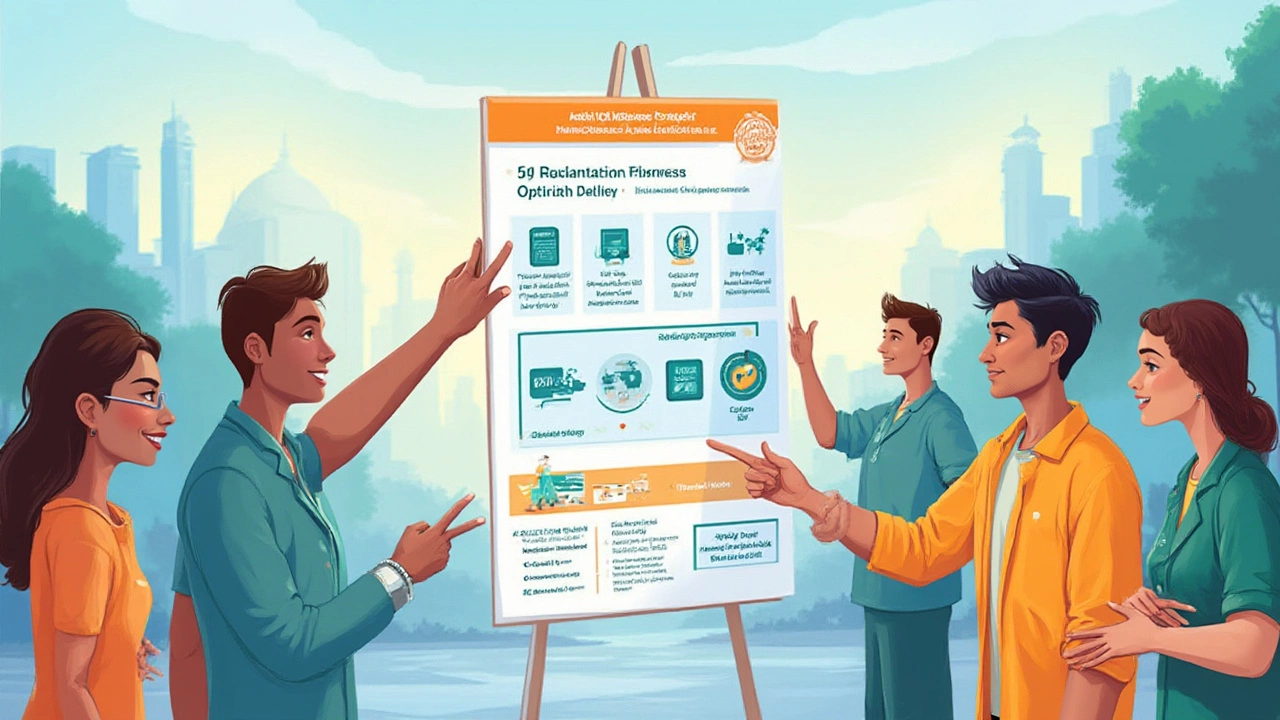
Everywhere I go, I hear people asking how to score Ozempic for $25 a month—like it’s a secret club only a few know how to join. Meanwhile, stories about $1,200 bills for a four-week supply keep surfacing, leaving so many folks feeling hopeless. Here’s the crazy thing: much lower prices really exist, and not just for a lucky handful. Let’s peel back the curtain on how to make Ozempic’s sticker shock a thing of the past.
Why Does Ozempic Cost So Much—And Who Actually Pays $25?
If you’ve ever felt like pharmacy prices are a wild guessing game, you’re not alone. Ozempic (semaglutide) is a GLP-1 agonist used for Type 2 diabetes—and yes, weight loss—which might explain why demand is through the roof. In the US, the list price for an Ozempic pen is about $935, and if you’re uninsured or your plan doesn’t cover it, that’s the price that’ll hit you straight between the eyes. According to data from 2024, Ozempic sales topped $18 billion worldwide, which is wild considering how many can barely afford a single month.
What’s behind the eye-watering price tag? For starters, Ozempic is still under patent protection in the U.S., meaning Novo Nordisk holds a tight grip on manufacturing and pricing—no generics until at least 2033. It’s not alone; lots of life-saving drugs skyrocket in cost when only one company controls the recipe. And because Ozempic is wildly popular not just for diabetes, but for weight loss, supply issues can make costs even more unpredictable.
But how do you break that $1,200 barrier? The secret: very few people ever pay sticker price once they tap into discounts, rebates, or insurance programs. The $25-a-month price you keep hearing about isn’t a myth—it’s Novo Nordisk’s own co-pay savings program at work, and it’s surprisingly accessible.
The key thing: Not all insurance (especially Medicare) qualifies, so if you can’t tap that $25 coupon, other tactics still exist. As of summer 2025, multiple pharmacy chains are advertising Ozempic savings, and online communities keep surfacing creative, legit ways to pay less. If you want to see just how varied prices are, check out this quick snapshot:
| Pharmacy/Program | Possible Monthly Cost | How It Works |
|---|---|---|
| Novo Nordisk Savings Card | $25 (with qualifying insurance) | Manufacturer coupon for eligible patients, covers most of co-pay. |
| GoodRx | $800–$900 | Discount prescription card; variable pricing by location. |
| Patient Assistance Foundation | $0 | Free for qualifying low-income or uninsured patients. |
| Mail-Order Pharmacies | $600–$950 | Varied pricing, sometimes lower than retail. |
| Canadian Pharmacies | $200–$400 | Legally risky for U.S. buyers, but popular with some people. |

Navigating Manufacturer Coupons, Insurance & Patient Assistance
If the $25 price sounds too good to be true, it’s because it only works for specific situations—but it’s easier to access than most people think. Here’s how it shakes out:
- Manufacturer Coupon (Novo Nordisk Savings Card): This coupon is golden if you have private/commercial insurance (think employer plans or Affordable Care Act policies). It drops your co-pay for Ozempic to $25 a month for up to 24 months. You can almost always download the card instantly—no doctor paperwork needed. It won’t work if you’re on Medicare, Medicaid, or Tricare (the fine print trips lots of people up here).
- Insurance: If your plan covers Ozempic, use the coupon to take care of your portion, and insurance covers the rest. Plans can get tricky, though; some require prior authorization (meaning your doctor has to convince them you need Ozempic) or cap coverage for weight loss only.
- Medicare & Medicaid: Manufacturer coupons legally can’t be used with government insurance. That leaves you with whatever your plan offers, which could mean paying the full price. Some states and specialty insurers have programs for diabetes meds, but these rarely drop the price close to $25.
- Patient Assistance Programs (PAPs): Novo Nordisk’s own foundation offers free Ozempic (and insulin) to people earning less than 400% of the federal poverty level who have no insurance or don’t qualify for Medicare/Medicaid. The paperwork is a slog, but it’s very real—over 57,000 Americans got free Ozempic this way in 2024.
- Pharmacy Discounts: Cards like GoodRx or WellRx sometimes knock down the price, but never to $25. If you’re uninsured, this is still worth checking at every pharmacy in your area, since prices can differ by hundreds of dollars across the street.
A doctor recently told CNN Health:
"The biggest mistake I see is that patients assume they can't afford their diabetes meds. But if you know where to look, the manufacturer actually wants to get it to you for a low monthly price—as long as you have the right type of insurance."That’s straight talk, and it checks out—Novo’s $25 deal is as close as you’ll get legally in the U.S. right now.
Struggling to qualify for the savings card? A lot of people use HealthCare.gov to switch to an ACA plan during annual enrollment (usually November–January), with a focus on plans that cover Ozempic. Employment-based plans almost always count too. If you’re on Medicare, your options narrow, but some extra help can come through non-profit foundation grants or state programs—ask your endocrinologist or pharmacist. And always check with your doctor: If you’re prescribed another GLP-1 like Wegovy or Mounjaro, similar manufacturer coupons can help there too.

Alternative Methods, Pharmacy Hacks & Little-Known Tips
Stuck without commercial insurance, or just not eligible for manufacturer help? Time to get creative. There are more ways to cut your cost than just using online coupons—but you have to be smart.
- Prescription Splitting: Doctors sometimes prescribe the higher-dose pen (which contains more medication) and have patients use smaller self-injected doses, stretching a monthly supply. This is cost-effective but must be done carefully, as the pen is designed for certain dose increments. Never try to “hack” your dose without your doctor’s green light—it’s your health on the line.
- Local Independent Pharmacies: These shops aren’t tied to the big chains and often offer surprise discounts, especially if you’re paying cash. Always ask for the best price—they really do want your business and may beat national chains’ prices just to keep you coming back.
- Patient Assistance Foundations: Nonprofits like PAN Foundation and NeedyMeds often hand out grants to help with high co-pays for diabetes medicine—worth a look if your income is just above the official manufacturer assistance cutoff. Don’t assume you won’t qualify; people making up to $99,000 a year for a family of four have sometimes gotten help for 2025.
- State Drug Assistance Programs: A few states, especially in the Northeast and California, offer their own prescription help programs for low-income residents—ask your doctor’s office or the pharmacy if anything is available in your state.
- Medical Tourism: Some Americans travel to Mexico or Canada to buy Ozempic for a fraction of U.S. prices, which can be as low as $200 a pen with a prescription. But crossing the border with medication purchased abroad is risky (and technically illegal above 90-day supply), so make sure you’re aware of the legal limits—and always ensure you’re getting the real thing, not a counterfeit.
- Online Pharmacies: There’s a growing number of telehealth platforms in 2025 that handle doctor appointments and ship genuine Ozempic at competitive prices straight to your door. Search for offerings with clear U.S. Board of Pharmacy accreditation. Sometimes, these telehealth setups offer bundled pricing with coupons included.
- Generic & Compounded Semaglutide: True generics are years away, but some U.S. compounding pharmacies offer semaglutide for as little as $300 per month. Not all insurance covers compounded medication, and FDA doesn’t fully regulate these, so ask a pharmacist about risks before diving in.
Here’s what you *shouldn’t* do: Never buy Ozempic from social media sellers, “wellness coaches,” or sketchy mail-order websites. There’s a big problem with fake and diluted product circulating online—a 2024 alert from the FDA found nearly 18% of online semaglutide orders contained counterfeit or no active ingredient at all.
The best savings moves come down to combining resources. Try using a manufacturer card plus a low-cost local pharmacy. Call around every few months since Ozempic prices can drop without warning. Stay organized: keep documentation, receipts, and coupon details in one place, so if anything changes with your insurance, you have it all handy to get help fast.
One last myth: You don’t need to stick with the pharmacy attached to your doctor’s office, hospital, or employer—every major chain and most local drugstores are required by law to honor manufacturer coupons and discounts if they accept insurance at all. If you get pushback, ask to speak to the head pharmacist or call Novo Nordisk’s helpline—it works much more often than you’d expect.
To wrap up, if you want Ozempic for $25 a month, you’ve got to play by the rules, but the rules are easier than most assume. The single most important thing? Ozempic is most affordable when you know which savings card or program you qualify for, use your insurance to the max, and double-check with your pharmacist every time. Thousands are already getting their medication for $25 or less—don’t let another month’s prescription break your spirit or your budget.

Write a comment